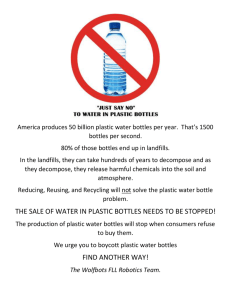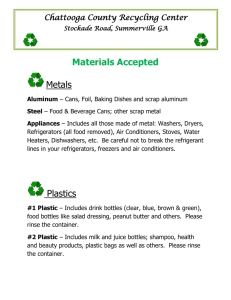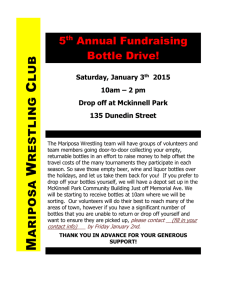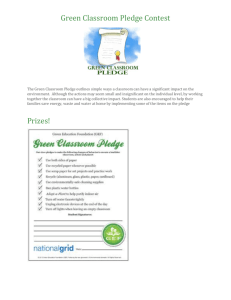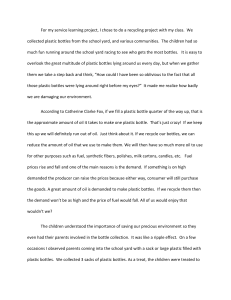Water Bottles fact sheet
advertisement
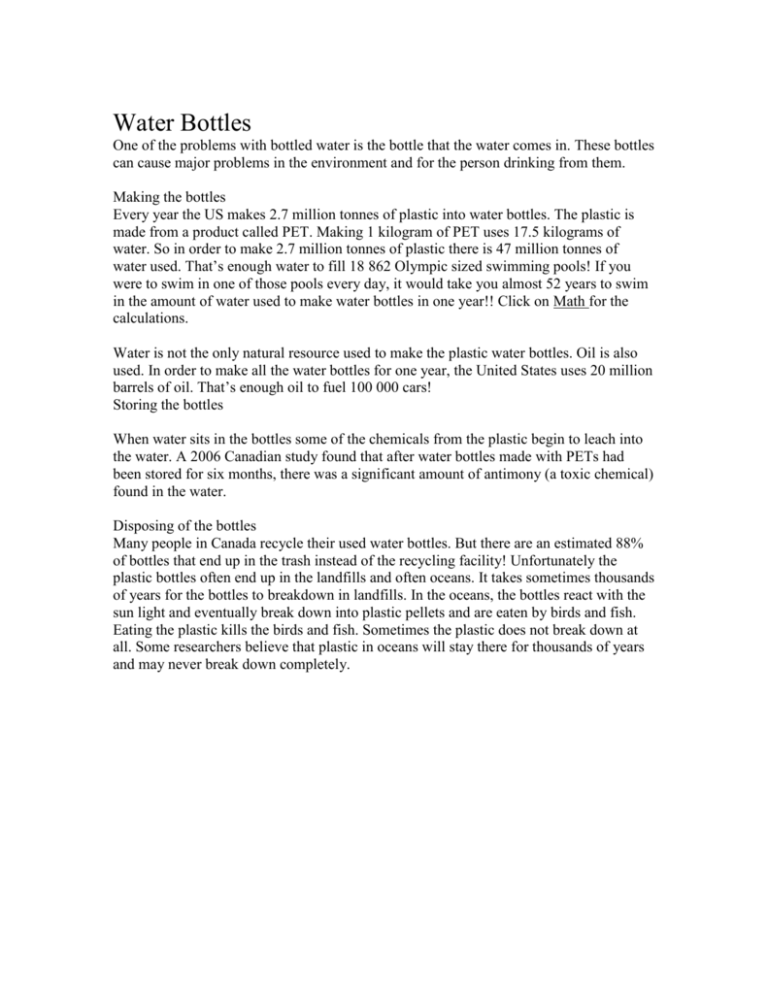
Water Bottles One of the problems with bottled water is the bottle that the water comes in. These bottles can cause major problems in the environment and for the person drinking from them. Making the bottles Every year the US makes 2.7 million tonnes of plastic into water bottles. The plastic is made from a product called PET. Making 1 kilogram of PET uses 17.5 kilograms of water. So in order to make 2.7 million tonnes of plastic there is 47 million tonnes of water used. That’s enough water to fill 18 862 Olympic sized swimming pools! If you were to swim in one of those pools every day, it would take you almost 52 years to swim in the amount of water used to make water bottles in one year!! Click on Math for the calculations. Water is not the only natural resource used to make the plastic water bottles. Oil is also used. In order to make all the water bottles for one year, the United States uses 20 million barrels of oil. That’s enough oil to fuel 100 000 cars! Storing the bottles When water sits in the bottles some of the chemicals from the plastic begin to leach into the water. A 2006 Canadian study found that after water bottles made with PETs had been stored for six months, there was a significant amount of antimony (a toxic chemical) found in the water. Disposing of the bottles Many people in Canada recycle their used water bottles. But there are an estimated 88% of bottles that end up in the trash instead of the recycling facility! Unfortunately the plastic bottles often end up in the landfills and often oceans. It takes sometimes thousands of years for the bottles to breakdown in landfills. In the oceans, the bottles react with the sun light and eventually break down into plastic pellets and are eaten by birds and fish. Eating the plastic kills the birds and fish. Sometimes the plastic does not break down at all. Some researchers believe that plastic in oceans will stay there for thousands of years and may never break down completely.

